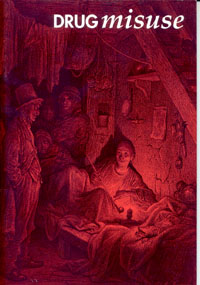Throughout history the desire to experience an altered state of consciousness can be seen to have been part of the essential nature of man. In all…
Throughout history the desire to experience an altered state of consciousness can be seen to have been part of the essential nature of man. In all parts of the world substances have been used to suppress pain, relieve depression and also to provide…
Throughout history the desire to experience an altered state of consciousness can be seen to have been part of the essential nature of man. In all parts of the world substances have been used to suppress pain, relieve depression and also to provide pleasurable sensations. Tobacco, alcohol, caffeine (coffee and tea), cannabis, cocaine, heroin, barbiturates or tranquillisers, for example, offer easy and immediate ways of altering psychological states. For some people the ease and immediacy with which such substances achieve these effects prove particularly seductive (Gossop, 1987). This can lead to the misuse of drugs’ of addiction and to the abuse of similar substances such as alcohol and tobacco.
The causes of drug misuse are considered in the paper at four levels; firstly the significance of what drugs do to and for the individual; secondly the influence that a drugs availability has on the likelihood and level of misuse; thirdly, whether certain characteristics or personality type makes a person more susceptible to drug misuse; and fourthly the influence of environmental factors such as family relationships, peer group pressure and unemployment on drug misuse. Whilst the causes of drug misuse in this paper have been broken down into four parts it should be recognised that they are in fact interrelated and there is no single explanation for drug misuse. The long term consequences of d r u g misuse such as the breakdown of relationships, poor health, loss of employment and the problems in financing what is often an expensive habit frequently through crime and the impact for society as a whole are discussed later in the paper.
In recent years drug misuse in Britain and in many other countries has become the focus of intense social and political concern. Over recent years Britain and many other parts of the world have experienced dramatic changes in the extent and pattern of drug use. It is not surprising that society faced with the sharpness and complexity of some of these changes should show a degree of confusion, panic in some circumstances and under reaction in others, both tying the drug debate into available rhetoric about liberty or moral decline or rushing only for more treatment (Royal College of Psychiatrists, 1987). Diverse news stories abound about young children using volatile substances (‘glue sniffing’ and the inhalation of aerosol propellants), acid house parties, the spread of AIDS among injecting drug users and into the general population, and drug related crime. However, the extent of the problem must clearly be placed in some sort of perspective. It is hoped that this paper will go some way towards answering the question of whether or not the current level of concern is justified.
